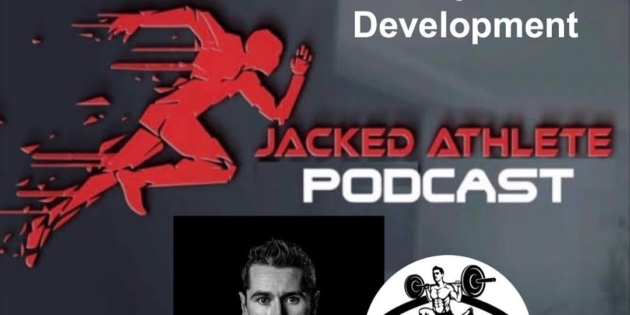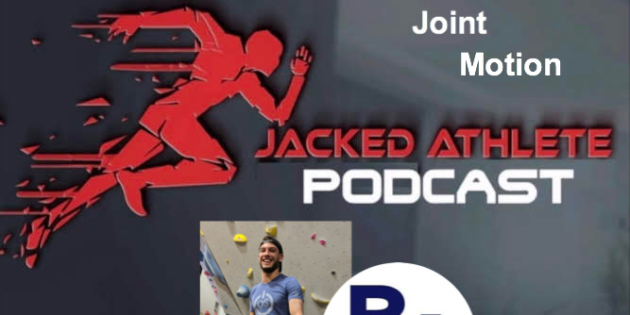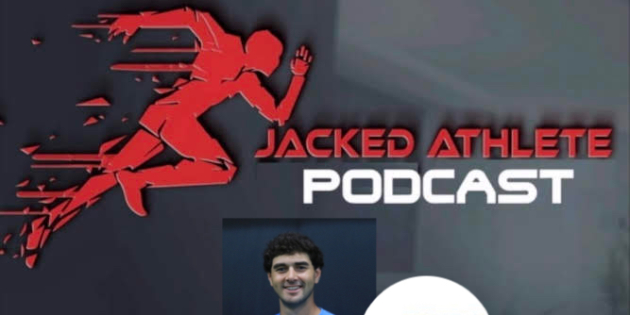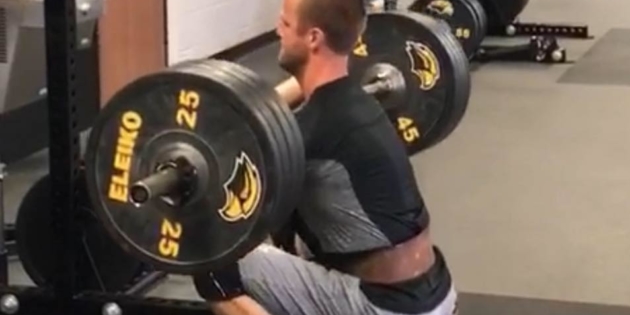Podcast #16: Adam Menner + Q&A
http://traffic.libsyn.com/jackedathlete/Adam_Menner_Pod_COMPLETE.mp3 Making a Pyramid: Base (Movement and Aerobic Capacity), next Layer (Strength), next Layer (Running Mechanics), top (Power, Speed variations) “If your argument is: They need to get stronger… but if they’re sprinting 15 and 20 meters progressively, their bodies are handling as much strength as possible.” “Sprinting is the hierarchy of athletic development… it’s…
Podcast #15: Ben Patrick (Knees Over Toes Guy)

http://traffic.libsyn.com/jackedathlete/KOT_Podcast_FInished.mp3 “If you jack up your tibialis, VMOs, hamstrings… your knees are gonna be a lot more protected for basketball.” “Weak knees don’t come from weak hips. They come from too strong of hips relative to how strong your knees are.” Knee Strength Measure: ATG-style Split Squat. Hamstring cover the calves without the back knee…
Podcast #14: Jeremiah Flood
Notes: “Everyone has their own path of growth.” Kids with low physical literacy: “Just make fitness fun.” “If you’re gonna want to be great… it’s gonna start out of love.” “As competition rises… what will separate them is their decision-making.” Fatigue is psycho-biological. “It may not be cardiovascular… but the way the brain focuses and…
Podcast #13: Paul DeGregorio (Reclaim Your Frame)

Notes: Hunter-gatherers: “They’re constantly moving and to me, that says aerobic system. Hunter-gatherers would have been aerobic monsters.” Taking care of Fundamental Joint Motion “by moving in a variety of ways (climbing trees, stalking, walking long distances, crouching, performing tasks in a deep squat).” “We actually evolved and pulled ourselves out of the food chain…
Podcast #12: Jarod Burton (Train Efficiently)

Hierarchy of Survival: “The most important thing about training is being able to breathe in any position that the athlete needs to get into.” “If breathing is the #1 thing on this hierarchical status, if I don’t first fix that source, then trying to fix everything else with muscular imbalance and vestibular system is going…
Podcast #11: Daniel Back (Jump Science)

Vertical Jump Space Problems: “The concept of a plyometric-based program is risky.” “You’re not addressing structure very well at all.” “Training way too much.” Isolation ideas: “Just get your squat up mindset.” Jump Science’s Principles Specificity: “Whatever you’re trying to get good at, you have to have a background of doing it.” General Strength Training.…
Thoughts 11 – Patrick Peterson

Pat is an Athletics Associate at Army West Point 1) Regressive Progressions One of the early concepts you learn as a performance coach is the idea of progression within a program. Periodization and phase potentiation are designed to aid in athletes success by checking boxes before moving onto new modalities. This is a necessary step…
Podcast #10: Kevin Foster (Feet, Hips, Spine, Fascia)

The spectrum: Powerlifting (extreme Muscle Driven) and Javelin, High Jumping (extreme Elastic, Energy Transfer) Rewire: Driving torque from the foot versus rotating from the hips. “Rotating one is gonna rotate the other.” Muscle & Energy Transfer Paradigm: “Strength will make you faster, strength will make you a better athlete. But obviously it’s not that simple.”…
Thoughts 10 – Alex Richard

Alex Richard is an Assistant Strength & Conditioning Coach at The University of Southern Mississippi 1. Play sport as often as possible Accumulating a variety of sprints/jumps/agility/reaction NATURALLY is much better than the rigid speed/plyometric/agility programs with the meathead strength coach who probably can’t jump very high or run fast but can lift a lot…
Podcast #9: Brett Adams (Transcending Performance)
Notes: On young athletes: “If they don’t have character, they’re not going to learn it by yelling at them and cursing at them… They don’t get it. They don’t care.” “Development is a fluctuating process.” “We get in our way more times than anyone else.” “A lot of kids want competition but they don’t know…


